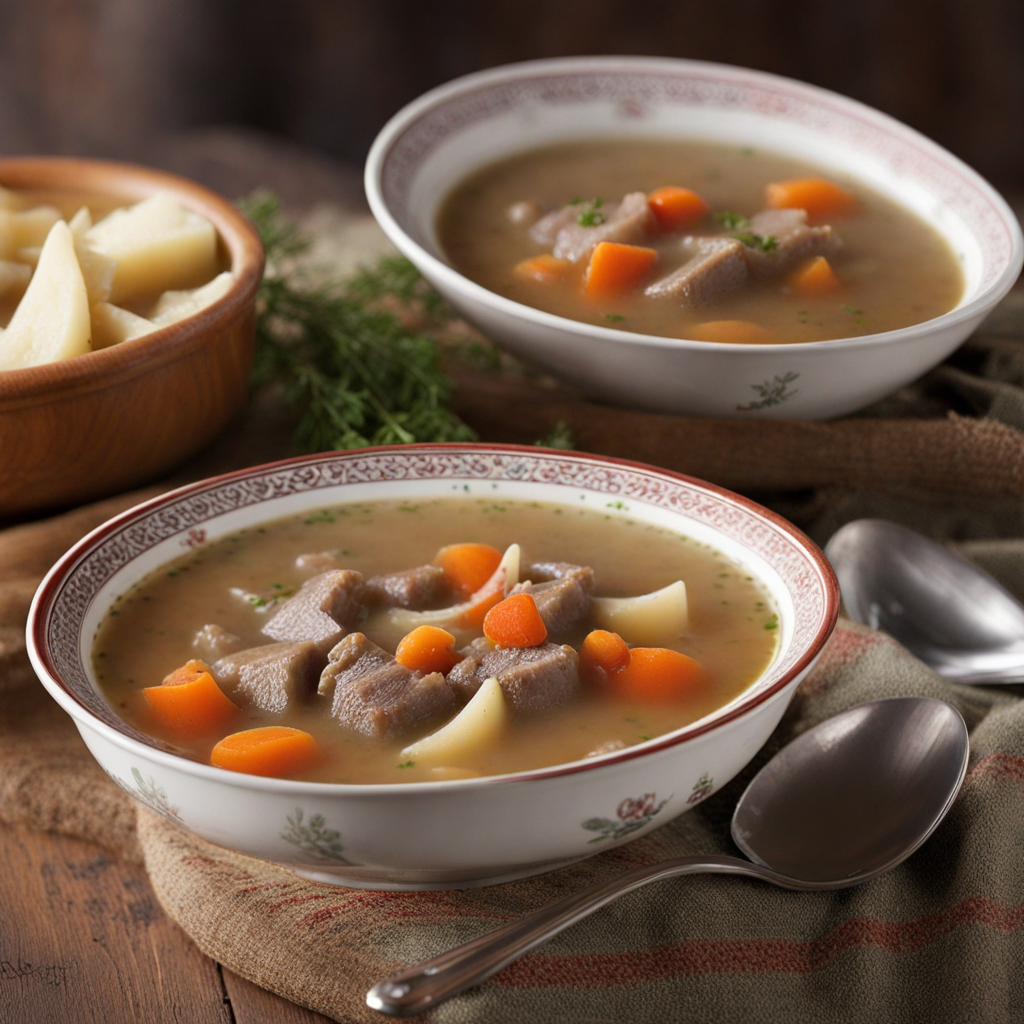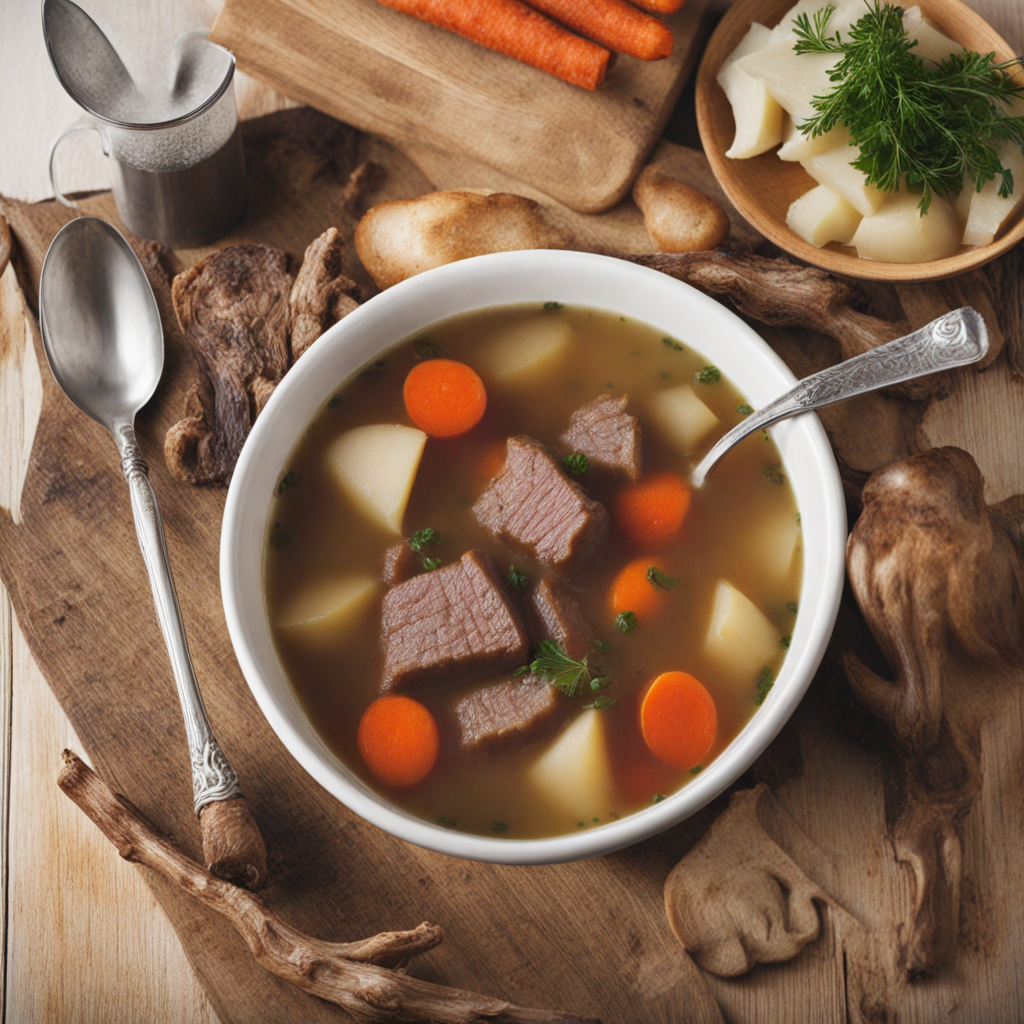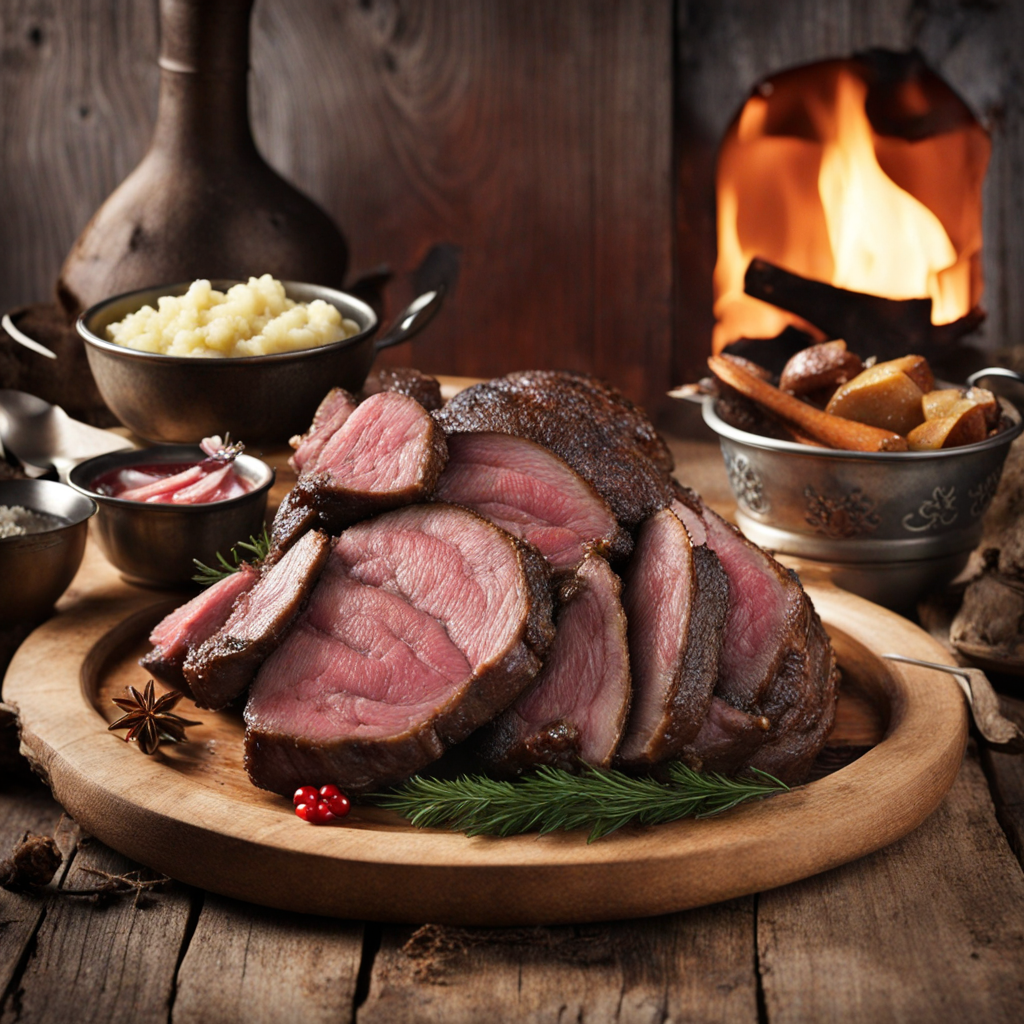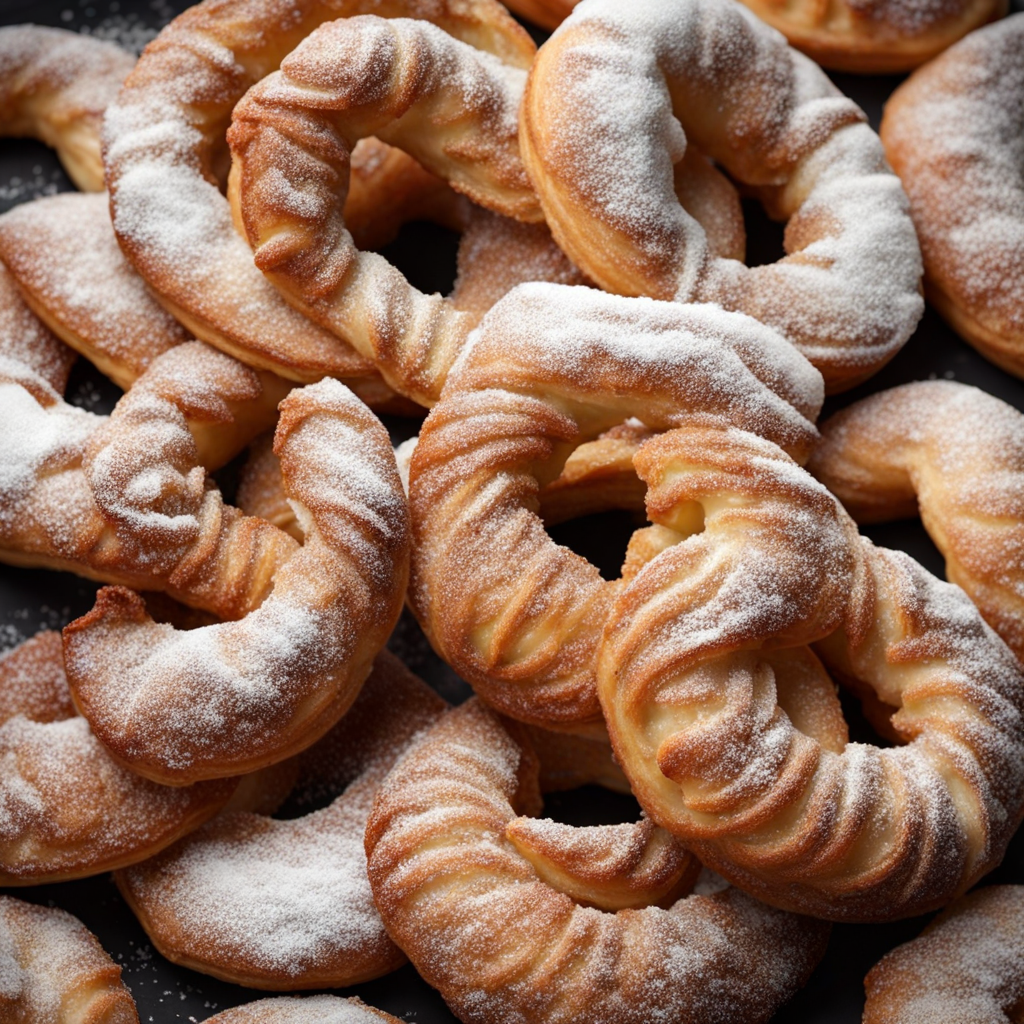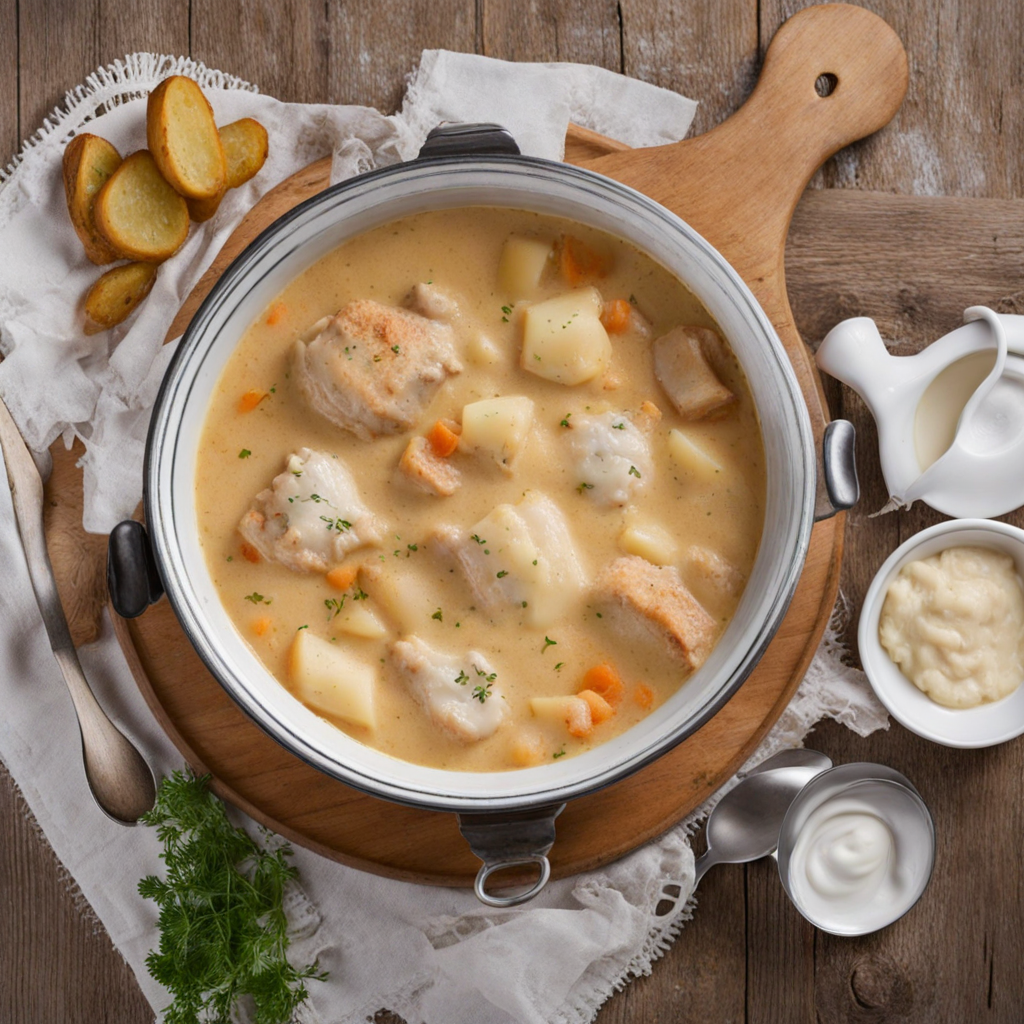Kjötsúpa
Kjötsúpa, often referred to as Icelandic meat soup, is a hearty and comforting dish that embodies the essence of traditional Icelandic cuisine. At its core, Kjötsúpa features tender chunks of lamb or mutton, simmered slowly to extract rich flavors and create a deeply satisfying broth. The meat is typically accompanied by a medley of root vegetables such as potatoes, carrots, and rutabagas, which not only add sweetness and texture but also enhance the nutritional value of the soup. Each ingredient is carefully selected to ensure that the dish is both filling and nourishing, making it a beloved staple during the colder months in Iceland. The preparation of Kjötsúpa is a labor of love, often passed down through generations. The process begins with browning the meat to develop a robust flavor, followed by adding water and allowing it to simmer for several hours. This slow-cooking technique allows the flavors to meld beautifully while making the meat incredibly tender and succulent. Herbs such as thyme and parsley are commonly added, infusing the soup with earthy aromas that transport you to the lush Icelandic landscapes. The result is a steaming bowl of comfort that warms both the body and soul, perfect for family gatherings or a cozy evening at home. What truly sets Kjötsúpa apart is its versatility; while the traditional recipe remains cherished, many chefs and home cooks experiment with additional ingredients to create their own unique versions. Some may introduce barley or other grains, while others might enhance the broth with spices like black pepper or bay leaves. The simplicity of the dish allows for creativity while still honoring its rich heritage. Each spoonful offers a taste of Icelandic culture, inviting you to explore a world of flavors that celebrate the natural bounty of the land and the warmth of its people.
How It Became This Dish
Kjötsúpa, a traditional Icelandic meat soup, has deep roots in the country's culinary history, reflecting both the harsh environment of the North Atlantic and the resourcefulness of its people. As a staple dish, Kjötsúpa embodies the essence of Icelandic cuisine, which is characterized by its reliance on locally sourced ingredients and simple, hearty preparations. The origins of Kjötsúpa can be traced back to the Norse settlers who arrived in Iceland in the 9th century. They brought with them their culinary traditions and techniques, which were adapted to the unique climate and geography of the island. The primary component of Kjötsúpa is lamb, which has been a significant source of sustenance for Icelanders for centuries. Icelandic sheep are well adapted to the rugged terrain and harsh weather conditions, thriving on the sparse vegetation. This makes lamb a natural choice for the soup, as it is flavorful and tender. In addition to lamb, the soup typically includes a variety of root vegetables such as potatoes, carrots, and parsnips, which were commonly cultivated in Iceland. These ingredients not only add flavor but also provide essential nutrients, making Kjötsúpa a nourishing meal for families, especially during the long, cold winters. The cultural significance of Kjötsúpa extends beyond mere nourishment; it is a dish that brings people together. Traditionally, it is often served during family gatherings and celebrations, symbolizing hospitality and warmth. The act of preparing Kjötsúpa is also a communal experience, with family members often joining in to chop vegetables and prepare the lamb. This shared effort fosters bonds and creates a sense of belonging, making the soup more than just a meal—it's a vital part of Icelandic social life. Over the centuries, Kjötsúpa has evolved, influenced by both the availability of ingredients and the changing tastes of the Icelandic people. While the basic recipe has remained largely unchanged, modern variations have emerged that incorporate different vegetables and seasonings. For instance, some contemporary recipes include ingredients such as cabbage or leeks, which were not traditionally used but have become popular in recent years. Furthermore, with the influence of global culinary trends, some chefs have started to experiment with spices and herbs, adding a new twist to this classic dish. The preparation of Kjötsúpa is a reflection of Icelandic ingenuity. In a land where resources are limited, the practice of making soup allows for the use of leftover meat and vegetables, minimizing waste. Traditionally, the soup is simmered for several hours, allowing the flavors to meld beautifully while breaking down the collagen in the lamb, resulting in a rich and hearty broth. This slow cooking method is not only practical but also enhances the dish’s comforting qualities, making it a perfect choice for cold weather. As Iceland transitioned into the 20th century, the industrialization of food processing began to change the landscape of traditional cooking. While many Icelanders still cherish homemade Kjötsúpa, the rise of convenience foods led to a decline in traditional cooking practices. However, in recent decades, there has been a resurgence of interest in traditional Icelandic cuisine, fueled by a growing appreciation for local and sustainable food sources. This revival has led to a renewed focus on dishes like Kjötsúpa, with many restaurants and home cooks seeking to honor traditional recipes while also embracing modern culinary practices. Today, Kjötsúpa can be found in various forms across Iceland, from family kitchens to upscale restaurants. It is often featured on menus as a symbol of Icelandic heritage, appealing to both locals and tourists eager to experience authentic Icelandic flavors. In addition to its presence in restaurants, Kjötsúpa is also a popular dish during festivals and special occasions, reinforcing its status as a cultural emblem of Iceland. The soup’s role in Icelandic culture is also evident in its representation in literature and folklore. Many Icelandic sagas and stories reference traditional foods, including Kjötsúpa, portraying them as integral to the daily lives of the characters. These narratives help to preserve the cultural significance of such dishes, ensuring that they remain a part of Iceland’s rich history. Furthermore, Kjötsúpa has garnered international recognition, with Icelandic chefs showcasing this traditional dish in culinary competitions and gastronomy events. This exposure has not only highlighted the uniqueness of Icelandic cuisine but also sparked interest among food enthusiasts worldwide, eager to explore the flavors of this remote island. In summary, Kjötsúpa is more than just a delicious lamb soup; it represents a significant aspect of Icelandic culture and history. From its origins among Norse settlers to its modern-day popularity, Kjötsúpa has adapted and thrived, reflecting the resilience and creativity of the Icelandic people. As the world becomes increasingly focused on sustainability and local food movements, Kjötsúpa stands as a testament to the enduring value of traditional culinary practices, reminding us of the importance of heritage and community in the kitchen.
You may like
Discover local flavors from Iceland


